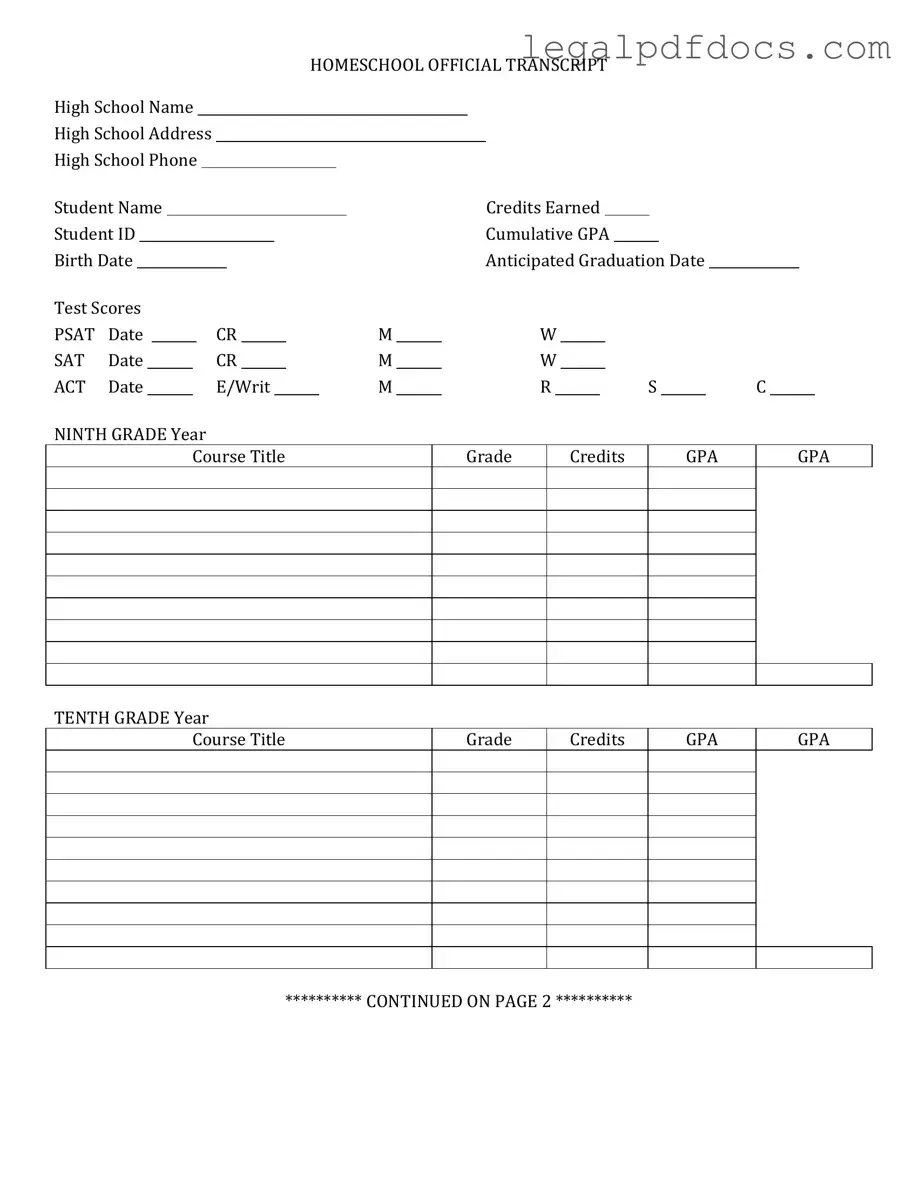Fill Out a Valid High School Transcript Template
The High School Transcript form is an official document that provides a comprehensive record of a student's academic performance and achievements during their high school years. It includes details such as courses taken, grades received, and graduation status. Completing this form is essential for college applications, job opportunities, and various other purposes.
Ready to get started? Fill out the form by clicking the button below.
Open High School Transcript Editor Here
